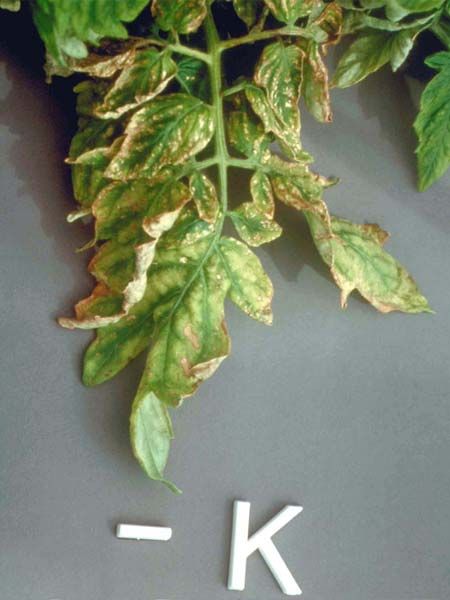Providing the right nutrients to your lawn and garden helps them thrive. You can create a lush, healthy landscape with a little knowledge of your soil’s composition—and then using that information to pick the right fertilizers.
This guide explains the essentials of garden nutrition, offers troubleshooting tips for common problems, and helps you create the ideal nutrient mix for your lawn and garden.

Learn About Your Lawn with a Soil Test
Before you begin applying fertilizers or soil amendments, it’s essential to understand your soil’s current condition. Conducting a soil test is the first and most crucial step in maintaining a healthy lawn and garden. Soil tests provide valuable insights into the nutrient composition, pH level, and organic matter content of your soil.
By identifying specific nutrient deficiencies or imbalances, soil tests help you make informed decisions about what your plants need to thrive. Additionally, soil tests can prevent over-fertilization, which saves money and protects the environment by reducing the risk of nutrient runoff.
A kit can be obtained from a university extension service (such as soiltest.umass.edu) for around $20. Results, usually available within a week, provide precise recommendations for nutrient applications.
We recommend retesting your soil every five years to ensure your garden receives the right balance of nutrients.
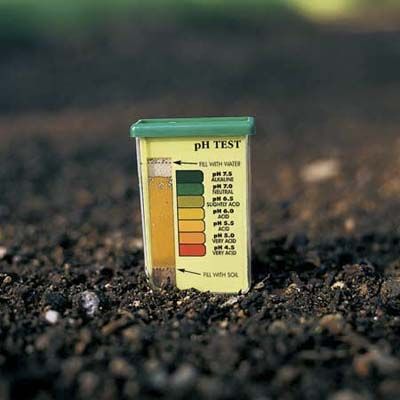
Interpreting Soil Test Results: Next Steps for Your Garden
Once you receive your soil test results, the next step is to start improving its health.
Begin by nourishing your soil with several inches of well-aged compost, applied in spring and fall. This top-dressing improves the soil’s ability to retain nutrients and water, enhances its structure to become more “fluffy,” and stimulates beneficial microbial activity.
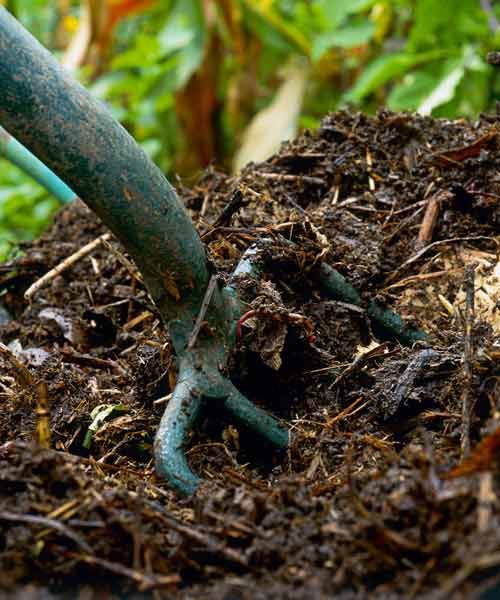
Determining What the Soil Needs
After enhancing soil quality, use targeted fertilizers to address any remaining deficiencies. To do that, determine the appropriate nutrient ratio for your garden. This involves calculating the ideal ratio of nitrogen (N), phosphorus (P), and potassium (K) based on the recommendations provided in your soil test.
- Nitrogen (N): Fuels leaf and stem growth, contributing to lush, green foliage and overall plant vigor.
- Phosphorus (P): Stimulates root growth and seed formation, aiding in the development of strong root systems and promoting healthy flowering and fruiting.
- Potassium (K): Promotes flowering and fruiting, enhancing the plant’s ability to produce blooms and fruits while improving overall disease resistance and drought tolerance.
For example, if your soil test suggests applying 1.5 pounds of nitrogen, 0.5 pounds of phosphorus, and 1 pound of potassium, you would divide each number by the smallest value (in this case, 0.5). The resulting ratio of 3-1-2 would guide you in selecting a fertilizer with a similar N-P-K ratio, such as 9-3-6, to ensure that your plants receive the appropriate nutrients.
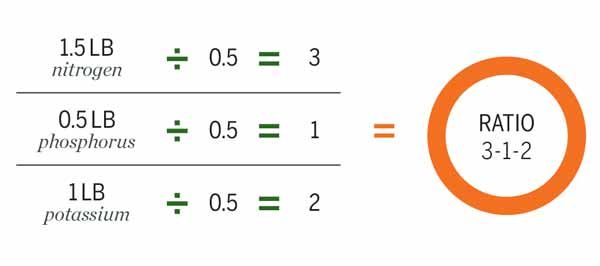
Choosing the Right Lawn Products
When purchasing fertilizer, look for a product with a label that closely matches this ratio, such as 9-3-6 or 3-1-2. This ensures you’re providing your plants with the correct balance of nutrients based on your soil’s specific needs.
Look at different fertilizer labels, which outline the nutrients they provide. The labels’ numbers represent the fertilizer grade and indicate the actual percentage, by weight, of the three primary nutrients: nitrogen, phosphorus and potassium.
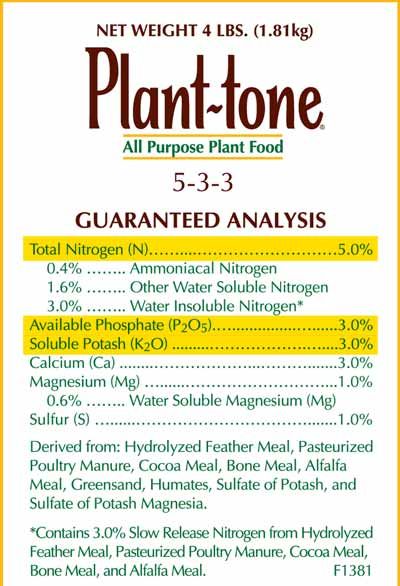
These are collectively referred to as N-P-K. For example, a label reading 5-3-3 means:
- 5% nitrogen
- 3% phosphorus
- 3% potassium
Much of the remainder is filler such as clay, which aids in even distribution and prevents chemical burn. These N-P-K numbers help you select the best combination of nutrients to address specific deficiencies in your soil, as indicated by your soil test results.
Fertilizers vs. Soil Amendments
As you’re shopping, you’ll see products labeled as either fertilizers or soil amendments. Understanding the difference helps with effective plant care. Each serves a unique purpose in nurturing your garden, providing essential nutrients and a healthy growing environment for your plants.
Fertilizers, whether organic (like bone meal) or chemical (such as superphosphate), directly supply plants with essential nutrients.
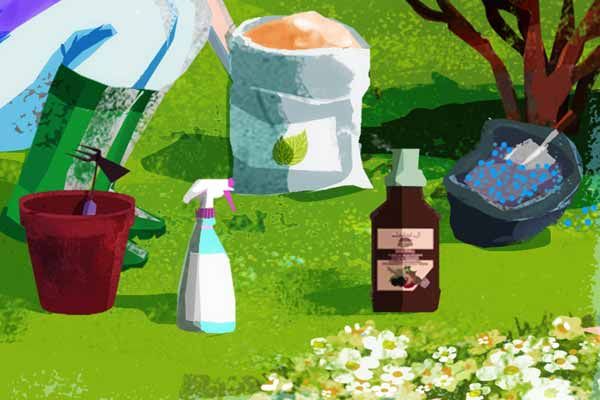
Soil amendments, on the other hand, indirectly benefit plants by improving soil structure, texture, and microbial activity. Examples include the following options:
- Animal manures: Manure enriches the soil with essential nutrients and organic matter. They also help improve soil fertility and promote beneficial microbial activity.
- Compost: Compost improves soil texture and fertility by adding a balanced mix of nutrients and organic matter. It also enhances the soil’s water-holding capacity and supports healthy root growth.
- Peat moss: Peat moss enhances soil structure by increasing its moisture retention and aeration. It also helps acidify the soil, which can benefit acid-loving plants.
Additionally, organic mulches like pine bark serve a dual purpose. They conserve moisture and deter weeds while feeding the soil as they decompose. Using fertilizers and amendments in tandem can help achieve the optimal nutrient balance for your garden.
Choosing Between Synthetic vs. Organic Nutrients for Your Lawn
Your choice will depend on your gardening goals and timeline. Here is a breakdown of each nutrient type.
Synthetic Fertilizers
Synthetic fertilizers dissolve quickly in water, making their nutrients readily available to plants almost immediately. This rapid availability can lead to quick growth and noticeable improvements in plant health within a short period. They are particularly effective for giving lawns a vibrant green color or helping plants recover from stress swiftly. Synthetic fertilizers provide an immediate boost, making them useful for addressing urgent deficiencies.
However, they do not contribute to improving soil texture or structure. Their lack of organic matter and support for long-term soil vitality can lead to diminished soil health and fertility over time.
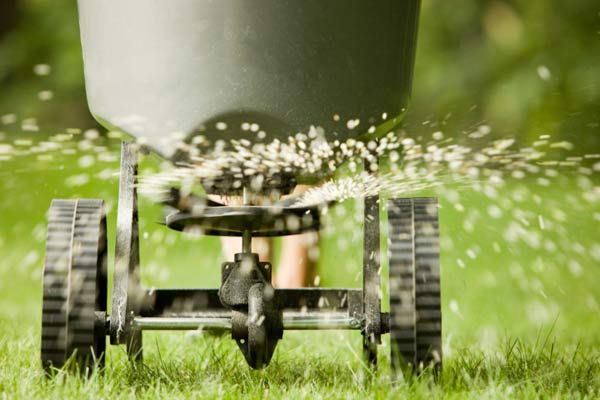
Organic Fertilizers
Organic fertilizers decompose gradually, releasing nutrients slowly over an extended period. This slow release ensures a steady supply of nutrients, which supports sustained plant growth and reduces the risk of nutrient leaching. Organic fertilizers enrich the soil with organic matter, promoting beneficial microorganisms’ activity. These microorganisms are crucial in breaking down organic matter, enhancing nutrient availability, and improving soil health.
By adding organic matter to the soil, these fertilizers help improve soil texture and structure, making it more porous and better at retaining moisture and nutrients. Over time, this leads to healthier plants and a more resilient garden ecosystem.
Customized Feeding Guides for Plant Types
Different plants have varying nutritional needs. Vegetables and annuals are particularly susceptible to nutrient deficiencies, while trees and shrubs require less frequent feeding. Below is a guide to nourishing various plant types.
Perennials
Avoid high-nitrogen fertilizers for perennials, as they can lead to excessive foliage growth at the expense of flowers and roots. This imbalance can result in floppy stems and increased susceptibility to diseases.
Instead, use low-nitrogen, high-phosphorus, slow-release fertilizers. To provide balanced nutrition, opt for annual or semi-annual applications of aged manure or finished compost.
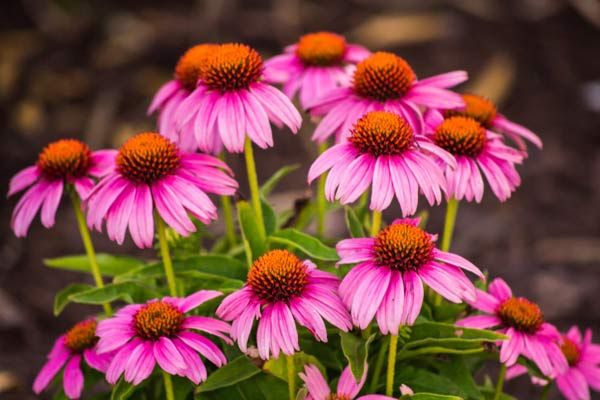
For example, Garden Food by Espoma or similar products with a balanced nutrient profile work well. With proper soil preparation, a single early spring application is often sufficient. Apply the fertilizer by broadcasting it throughout the beds or side-dressing in the general root zone of each plant.
Turf
Maintaining a lush, healthy lawn requires the right balance of nutrients, and manufacturers have simplified this with specially formulated lawn fertilizers. An all-purpose fertilizer with a 3-1-2 ratio or a specialty lawn food like Ringer Lawn Restore is an excellent choice. Apply these fertilizers twice a year: in late spring and early fall. For an even application, use a broadcast spreader.
To further enhance your lawn’s health, rake a few inches of compost into the turf during the fall. Aerating the lawn before applying compost will maximize its effectiveness. Additionally, consider overseeding any thin areas after fertilizing to ensure a fuller, more resilient lawn.
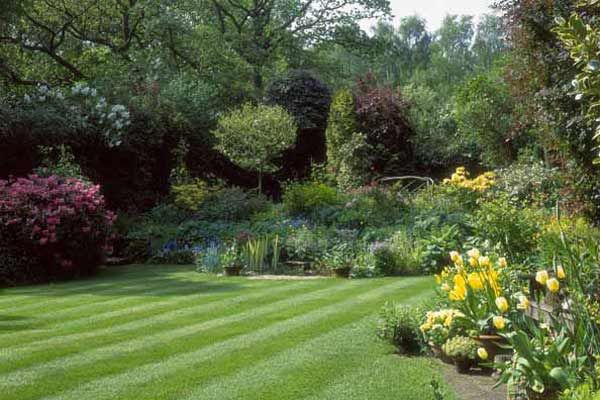
Trees and Shrubs
Trees and shrubs generally need less frequent fertilization than other garden plants, and their nutritional requirements vary depending on their age and overall health.
Avoid fertilizing shade trees and shrubs in their first growing season to promote strong lateral root growth. Established shade trees and shrubs often receive adequate nutrients from the soil, decomposing leaves, or nearby lawn fertilizers. Only fertilize if you observe signs of nutrient deficiency, such as minimal new growth.
For fertilizing, use a slow-release granular nitrogen fertilizer, such as Nursery Plus by Shultz. Apply this in early spring or autumn by broadcasting it within the tree’s or shrub’s root zone, extending from the trunk to the outermost branches.
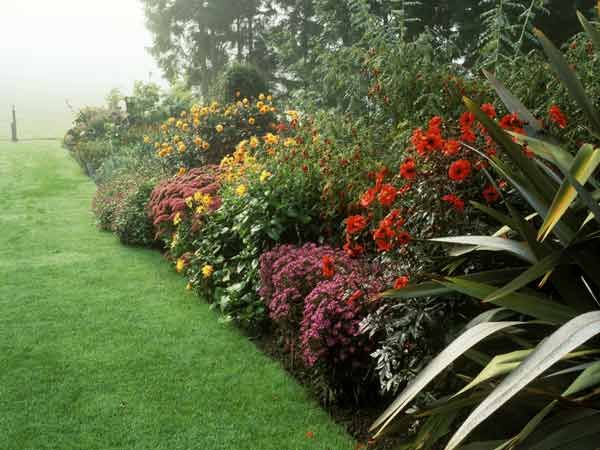
Annuals and Vegetables
Annuals and vegetables require high nutrients due to their rapid growth and short life cycles. Even soil with good fertility may need additional nutrients to support these plants throughout the growing season.
Start by conducting a soil test to determine specific nutrient needs and adjust based on the test results. Incorporate several inches of compost or other organic amendments to enhance soil fertility.
For fertilization, use a balanced fertilizer such as Osmocote Flower and Vegetable 14-14-14, or organic options like bone and blood meal. Apply the fertilizer six weeks after the last spring frost. Mix it into the soil during row preparation or place it at the bottom of planting holes for individual plants.
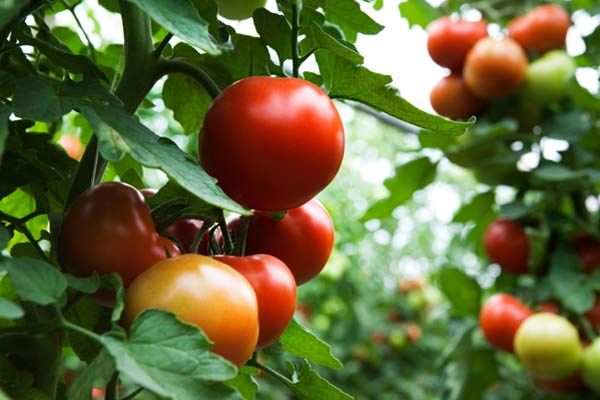
Container Plants
Plants in containers require more frequent fertilization due to limited nutrient availability and the leaching effects of regular watering.
Begin with fresh potting soil to provide initial nutrients. During the growing season, supplement with a balanced slow-release fertilizer to maintain nutrient levels. Fertilize every four to six weeks to support healthy growth.
Use an all-purpose fertilizer or a similar balanced, slow-release product. Apply the fertilizer by side-dressing and scratching it into the soil with a trowel every four to six weeks throughout the growing season.

Roses
Roses require a high nitrogen level, which must be replenished even in well-fertilized soil. Spraying liquid kelp emulsion on the leaves between feedings provides extra nutrients.
Add a nitrogen-rich fertilizer like Scotts Natural Lawn Food (11-2-2). Apply it after new leaves emerge following spring pruning and again after the first flush of flowers. In Zones 1-7, fertilization should stop in late July; in warmer zones, it should be discontinued in early September. Broadcast the dry fertilizer and spray the liquid emulsion on the entire plant, including the leaves.
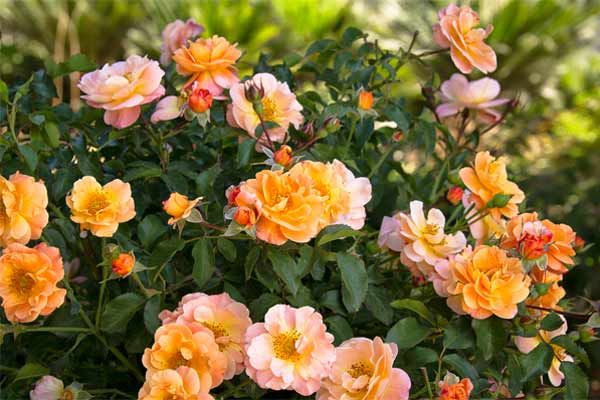
How To Diagnose Common Plant Deficiencies
Identifying nutrient deficiencies is essential for maintaining a healthy garden. Here are some common symptoms and solutions.
Bottom Leaves Turn Yellow
- Symptoms: Pale green new leaves, yellowish spindly stems, slow growth.
- Deficiency: Nitrogen
- Solution: Apply high-nitrogen fertilizers like cottonseed meal or ammonium sulfate. Incorporate organic aged compost or well-aged manure to ensure a steady release of nitrogen.
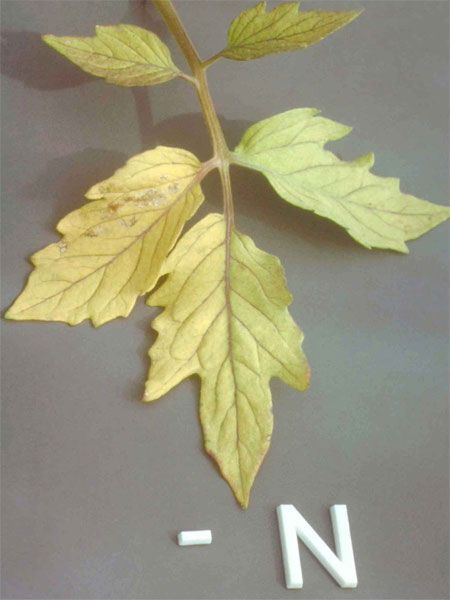
Leaves Turn Reddish-Purple
- Symptoms: Small, stunted leaves, foliage may appear burned at the tips, older leaves may turn dark green, reduced fruit or seed production.
- Deficiency: Phosphorus
- Solution: Dig in fertilizers such as greensand or superphosphate. Apply high-phosphorus fertilizers before planting, as indicated by a soil test. If symptoms appear midseason, side-dress with additional fertilizer around the base of plants.
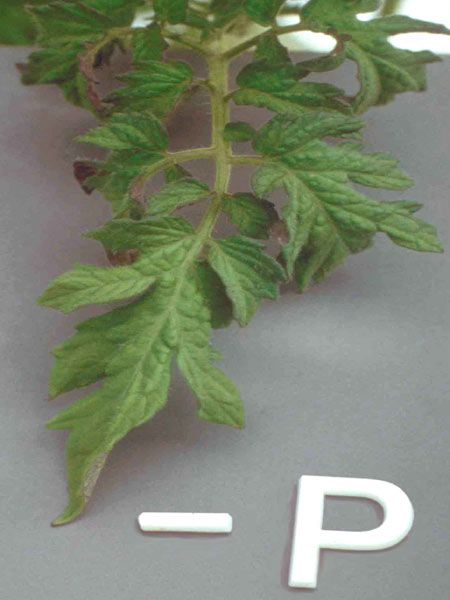
Scorched and/or Wilted Leaf Edges
- Symptoms: Yellowing between the leaf veins (interveinal chlorosis), slow growth, poor flowering or fruiting.
- Deficiency: Potassium
- Solution: For immediate relief, spray all leaves and stems weekly with a liquid fertilizer like fish emulsion until the plant recovers. Address long-term deficiencies by side-dressing with manure or greensand in the fall, as potassium is not mobile in soil. Conduct regular soil tests to monitor potassium levels and adjust fertilization accordingly.
